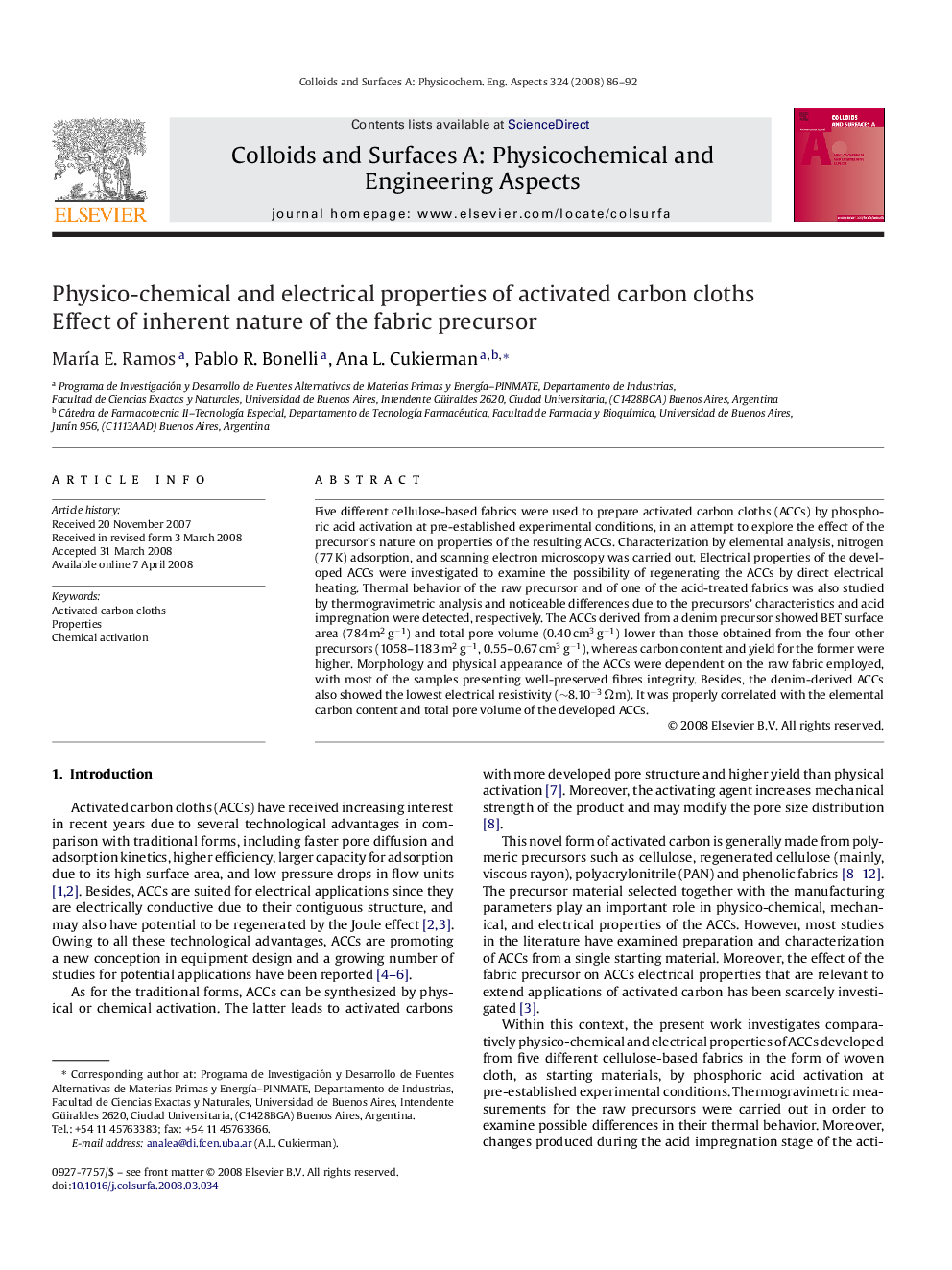| Article ID | Journal | Published Year | Pages | File Type |
|---|---|---|---|---|
| 596584 | Colloids and Surfaces A: Physicochemical and Engineering Aspects | 2008 | 7 Pages |
Five different cellulose-based fabrics were used to prepare activated carbon cloths (ACCs) by phosphoric acid activation at pre-established experimental conditions, in an attempt to explore the effect of the precursor's nature on properties of the resulting ACCs. Characterization by elemental analysis, nitrogen (77 K) adsorption, and scanning electron microscopy was carried out. Electrical properties of the developed ACCs were investigated to examine the possibility of regenerating the ACCs by direct electrical heating. Thermal behavior of the raw precursor and of one of the acid-treated fabrics was also studied by thermogravimetric analysis and noticeable differences due to the precursors’ characteristics and acid impregnation were detected, respectively. The ACCs derived from a denim precursor showed BET surface area (784 m2 g−1) and total pore volume (0.40 cm3 g−1) lower than those obtained from the four other precursors (1058–1183 m2 g−1, 0.55–0.67 cm3 g−1), whereas carbon content and yield for the former were higher. Morphology and physical appearance of the ACCs were dependent on the raw fabric employed, with most of the samples presenting well-preserved fibres integrity. Besides, the denim-derived ACCs also showed the lowest electrical resistivity (∼8.10−3 Ωm). It was properly correlated with the elemental carbon content and total pore volume of the developed ACCs.
